
The Hermès carré – a silk scarf named for its square shape and to distinguish it from the lesser ‘foulards’ of other houses – is one of the Parisian house’s most prized exports, recognised around the world for its vivid compositions of colour and print, and the delicacy of its construction. The latter is the result of hours of labour by dedicated artisans in Lyon, France, across two sites where each scarf is printed and finished by hand. ‘When you see all of the steps,’ says Cécile Pesce, the current creative director of Hermès women’s silk. ‘It is a privilege.’
Indeed, across the two sites on the outskirts of the city – the Bourgoin-Jallieu site to the south-east and the recently extended Pierre-Bénite closer to the centre – the process of creating a carré harks back to the accessory’s invention by Hermès family member Robert Dumas in 1937 and remains led by the artisan’s hand in the face of modernisation. Case in point, the scarf’s initial stage, the hand-inscription of the original design – patterns are commissioned from a series of notable artists and illustrators – into an image editing programme. Though the programme is digital, the team nonetheless painstakingly traces each brush or penstroke by hand using a drawing tablet and stylus in a process which takes on over 600 hours for each scarf’s design (several have taken far longer).
Inside the Hermès silk workshops in Lyon, France
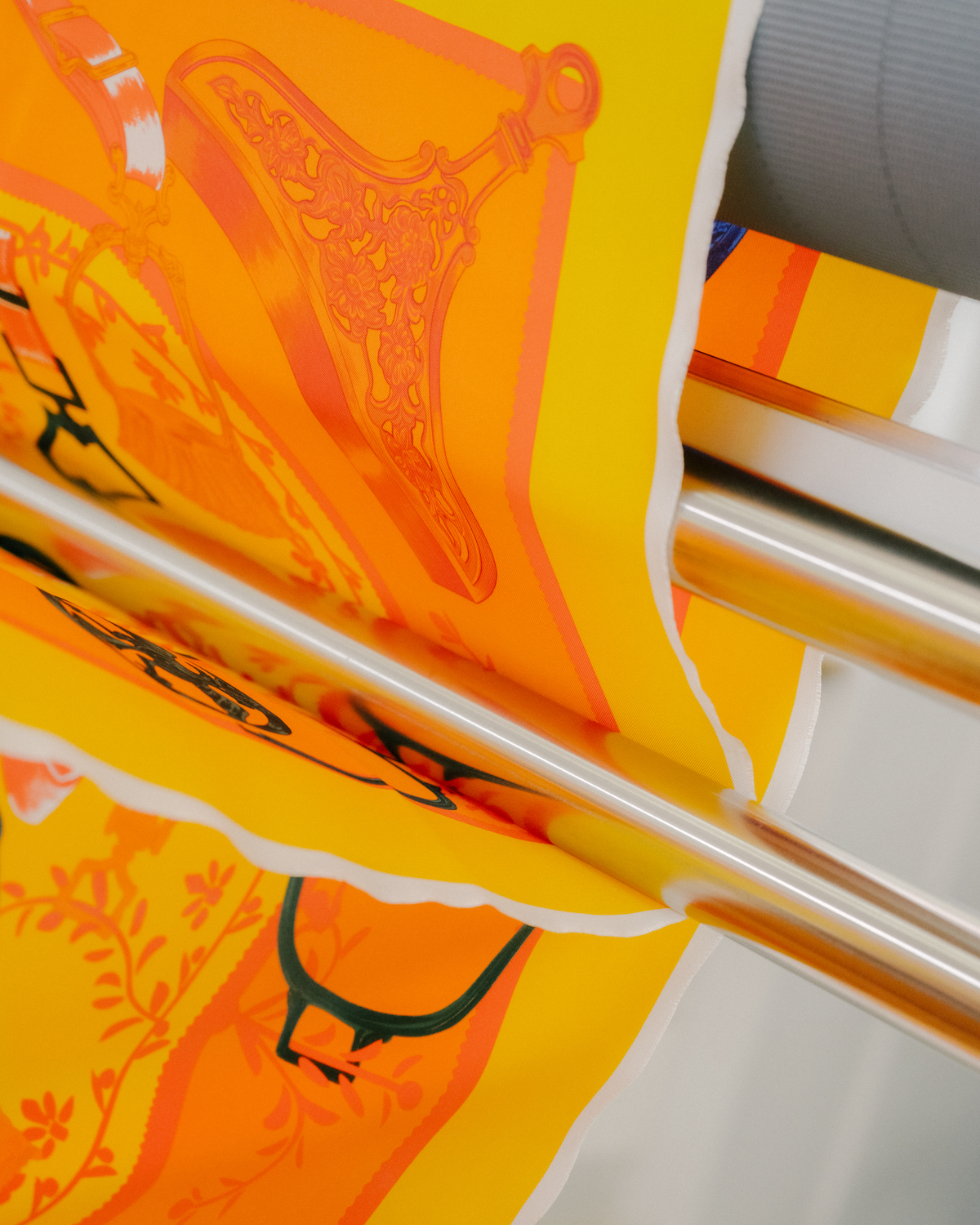
These designs are then separated into layers of colours for screen-printing, a process whereby ink is forced through stencil-like cut-outs in a mesh screen, layer on layer (all elements of a pattern in green, for example, are done at once, then blue, et cetera, until the print is completed). A complex act with plenty of opportunity for error, a scarf design can include up to 48 colours, and therefore screens. These various screens are created, or ‘engraved’, in house parlance, in the Bourgoin-Jallieu location, before being individually barcoded and transported to the Pierre-Bénite for printing (to complete the process, they return to the former where they are finished with hand-rolled edges, intricately stitched by hand).
Earlier this month (July 2023), Hermès inaugurated the newly expanded Pierre-Bénite site, which now includes a sleek three-building extension surrounded by verdant gardens created by Lyon-based architecture studio Unanime (it even includes its own vegetable patch, tended to by a dedicated gardener). There, state-of-the-art screenprinting machines have replaced the labour-intensive process of hand-dragging the ink over the screens; another production line is set to be added in the coming months. The site is also where the Willy Wonka-esque process of creating the now over 75,000 shades in the Hermès colour catalogue are mixed and perfected into their (secret) formulas.
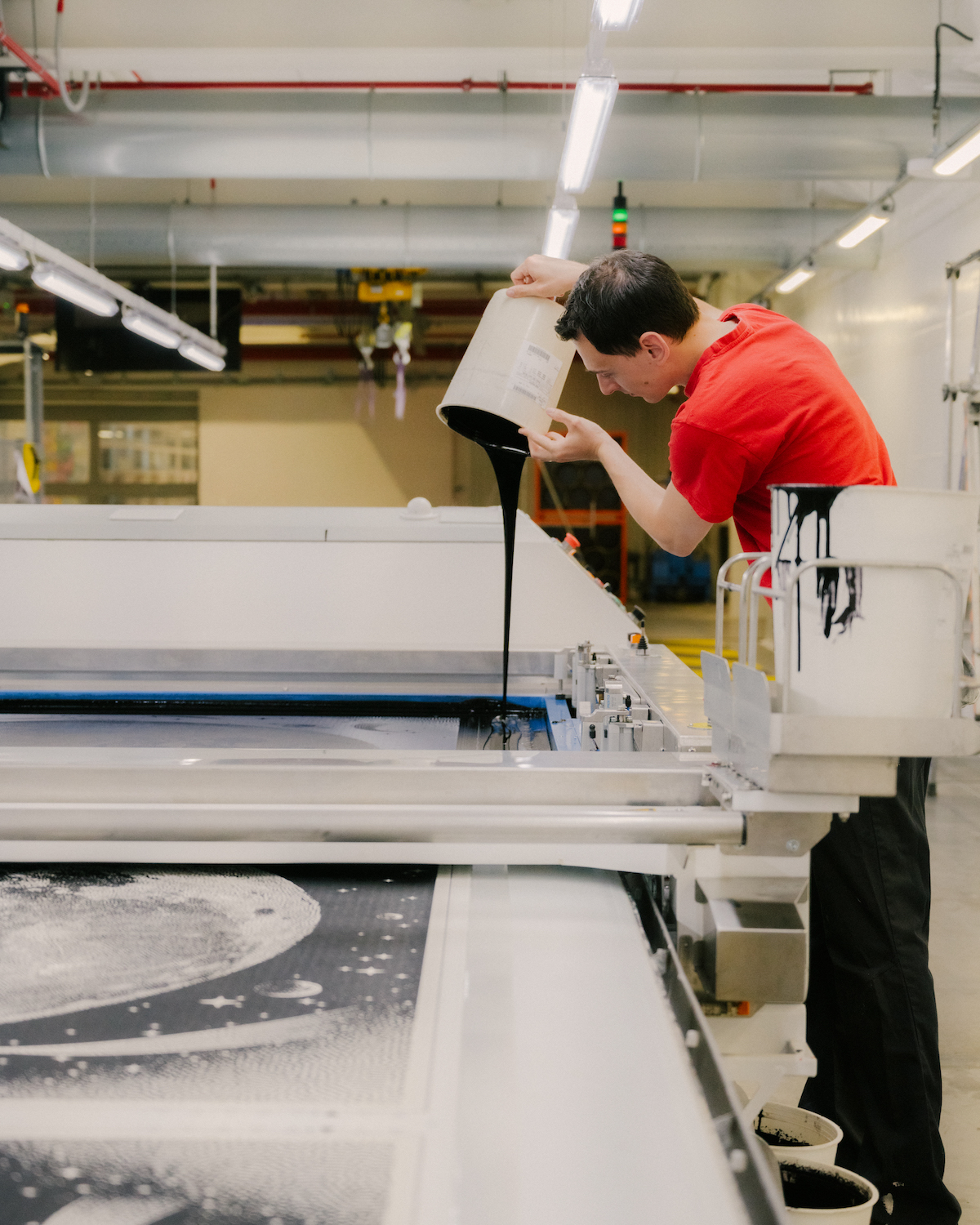
Indeed, colour is perhaps the central facet of Pesce’s role as creative director, which she began in 2020 having worked in the silk department since 2005 (she has also designed collections for Hermès’ ‘beach universe’ since 2014, a role she continues). Pesce is responsible for choosing the colours that best fit the designs that the artists have submitted, as well as updating archival prints with new hues. In the workshop, she demonstrates how different a singular design can appear with the colours shifted and changed. For her, choices are intuitive: ‘[The colours] are mixed from memories. The idea is to reorganise everything; colours are like words to make a sentence,’ she says. ‘Or how it is to make music: it is natural for me.’
Pesce notes that it is often easier when the carré utilises numerous shades rather than just a handful. ‘When you work with lots of colours, it’s easier because they feel equal to one another,’ she explains. ‘But when you just have five colours, they have to be exceptional. You have to respect the different shades – from dark to middle to very bright and the lightest lights.’
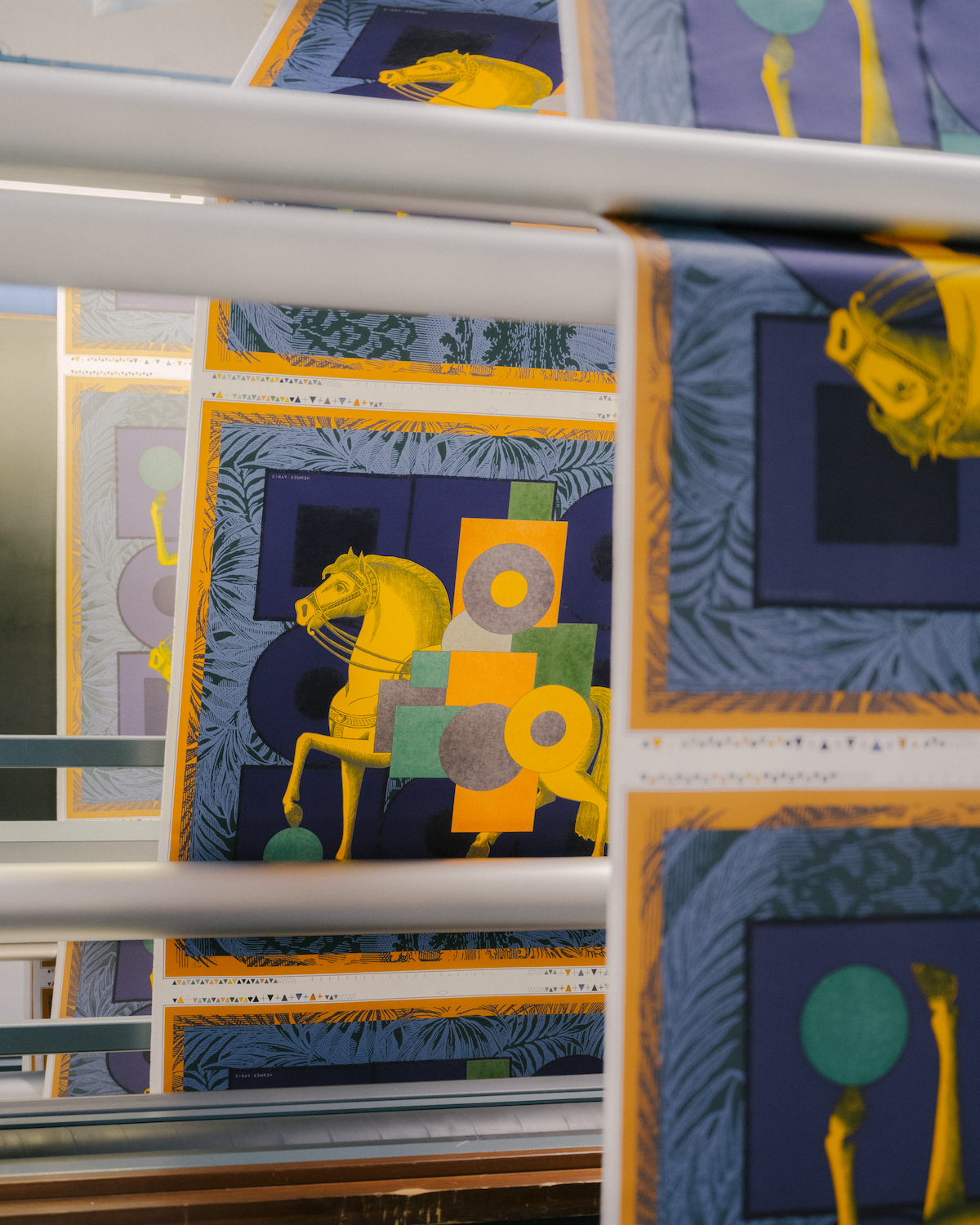
Pesce likens her role to a ‘conductor bringing it all together’, working alongside the colourists and artisans in Lyon and the wider womenswear teams in Paris where she is based. Her desire is for innovation: ‘You should think every day about tomorrow. Silk is a beautiful object that I want to move into the future,’ says Pesce. The proudest moment of her tenure so far is participating in the ‘Footsteps Around the World’ project, whereby Hermès united with a producer in Kyoto, Japan, undertaking historic marbled silk printing, captured in a short film by Frédéric Laffont.
Receive our daily digest of inspiration, escapism and design stories from around the world direct to your inbox.
She notes that craft – and the artisans who work on the various silk pieces – remain the bedrock of her métier at Hermès. ‘I really like to spend time in the workshop – I have a lot of respect for the artisans. They work at a really, really high level,’ she says, noting that she travels down to Lyon when she can. ‘I’ve always felt very free, and around people who are passionate about their work.’ Of the house’s signature silk product, the carré, she notes ‘its excellence, its specificity... it is unique to Hermès.’
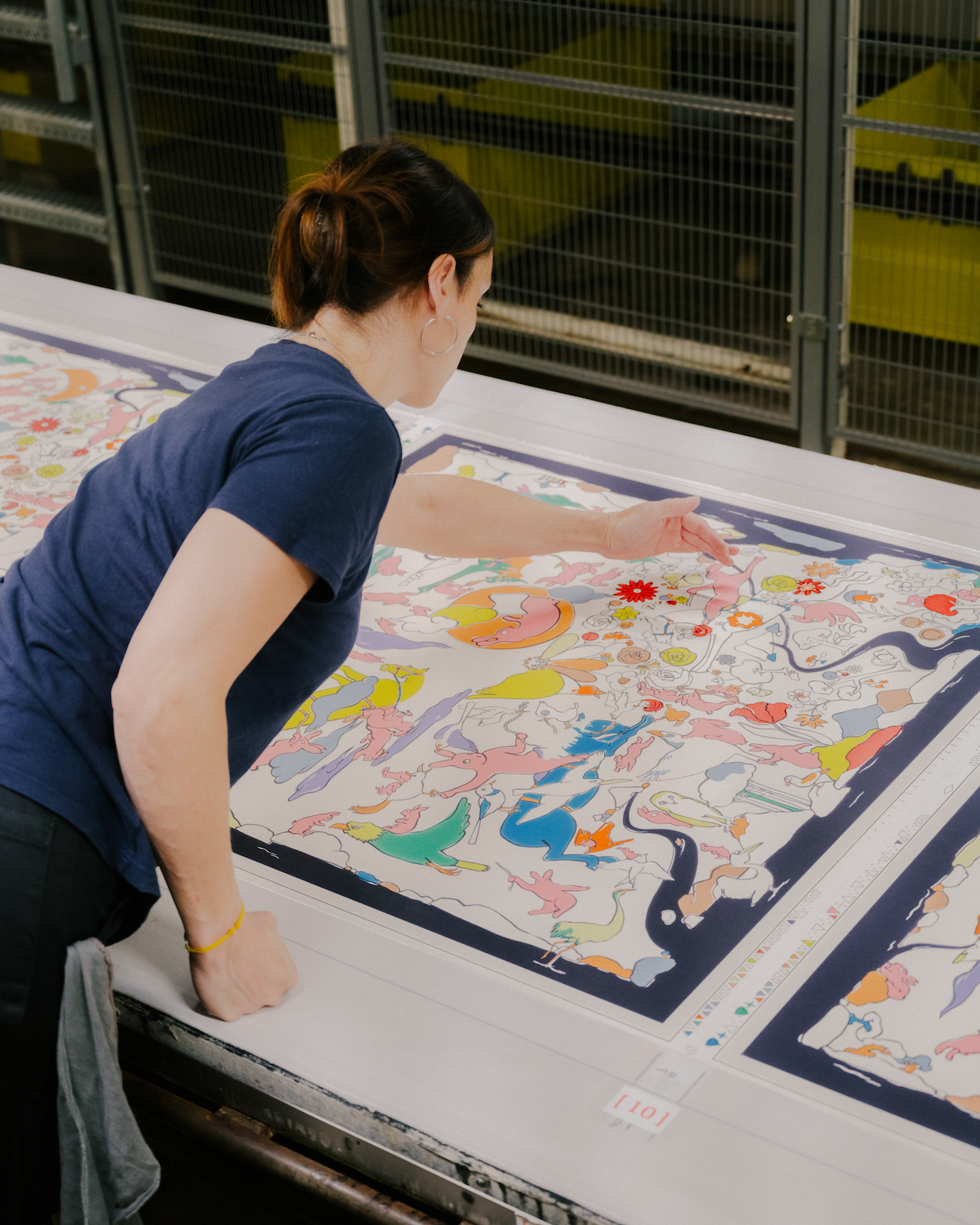
The day after, around 1,000 artisans and craftspeople will gather at the new factory site in Pierre-Bénite for its official opening in a celebration that includes musical performances, lawn games and a funfair. Bunting made from cut-up triangles of printed Hermès silk flutters overhead, and there is excitement in the air; the festivities will mark a rare halt in production, as everybody will take the day off to toast the occasion.
Hermès is not a fashion house, says Pesce, but something much more – a network of artisans across France and beyond, dedicated to working together to unite on the dizzying expressions of craft and creativity which are now synonymous with the bastion of French style. ‘It really is a family affair,’ she smiles.
Jack Moss is the Fashion & Beauty Features Director at Wallpaper*, having joined the team in 2022 as Fashion Features Editor. Previously the digital features editor at AnOther and digital editor at 10 Magazine, he has also contributed to numerous international publications and featured in ‘Dazed: 32 Years Confused: The Covers’, published by Rizzoli. He is particularly interested in the moments when fashion intersects with other creative disciplines – notably art and design – as well as championing a new generation of international talent and reporting from international fashion weeks. Across his career, he has interviewed the fashion industry’s leading figures, including Rick Owens, Pieter Mulier, Jonathan Anderson, Grace Wales Bonner, Christian Lacroix, Kate Moss and Manolo Blahnik.
-
 The White House faced the wrecking ball. Are these federal buildings next?
The White House faced the wrecking ball. Are these federal buildings next?Architects and preservationists weigh in on five buildings to watch in 2026, from brutalist icons to the 'Sistine Chapel' of New Deal art
-
 Georgia Kemball's jewellery has Dover Street Market's stamp of approval: discover it here
Georgia Kemball's jewellery has Dover Street Market's stamp of approval: discover it hereSelf-taught jeweller Georgia Kemball is inspired by fairytales for her whimsical jewellery
-
 The best way to see Mount Fuji? Book a stay here
The best way to see Mount Fuji? Book a stay hereAt the western foothills of Mount Fuji, Gora Kadan’s second property translates imperial heritage into a deeply immersive, design-led retreat
-
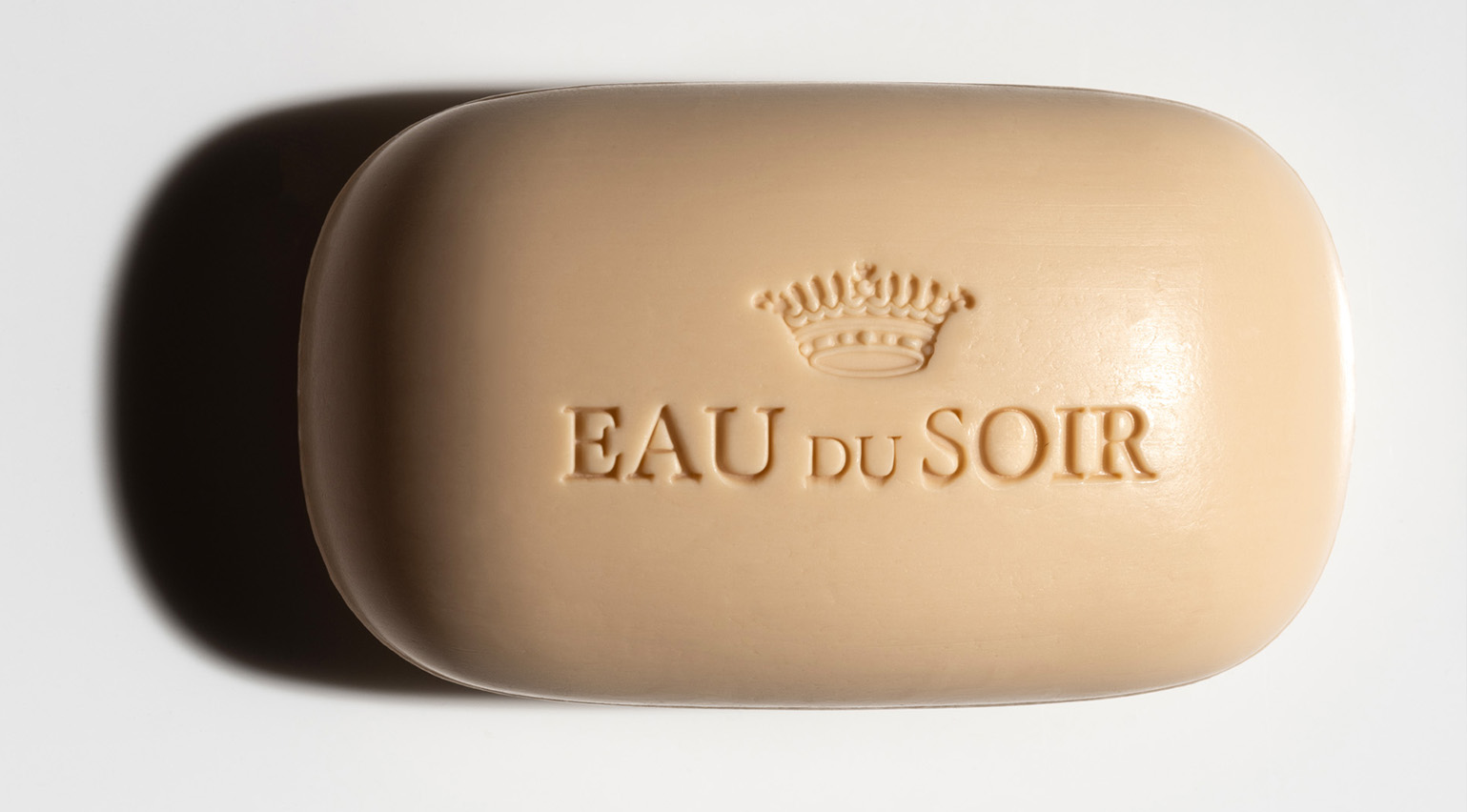 Unboxing beauty products from 2024, as seen on the pages of Wallpaper*
Unboxing beauty products from 2024, as seen on the pages of Wallpaper*Wallpaper's 2024 beauty picks included Chanel lipstick, Bottega Veneta perfume and solid soap from the likes of Aesop, Celine, Diptyque, Hermès and Sisley
-
 These illuminating fashion interviews tell the story of style in 2024
These illuminating fashion interviews tell the story of style in 2024Selected by fashion features editor Jack Moss from the pages of Wallpaper*, these interviews tell the stories behind the designers who have shaped 2024 – from Kim Jones to Tory Burch, Willy Chavarria to Martine Rose
-
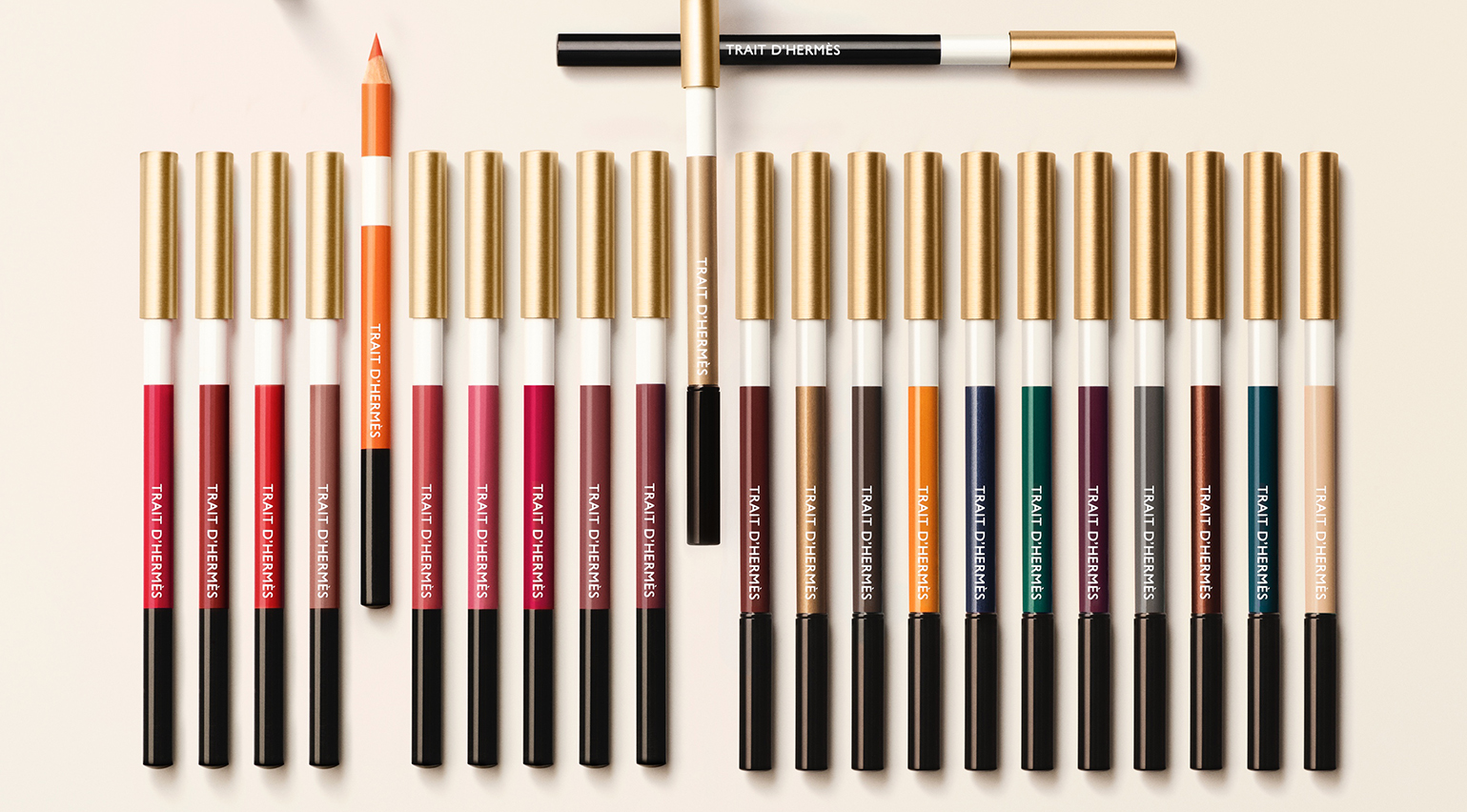 Hermès Beauty’s eye and lip pencils invite playfulness with colour and texture
Hermès Beauty’s eye and lip pencils invite playfulness with colour and textureHermès Beauty’s creative director Gregoris Pyrpylis has added to the ‘Trait d’Hermès’ collection with a set of eye and lip liners in kaleidoscopic colours. Here, he speaks to Wallpaper* about their playful design
-
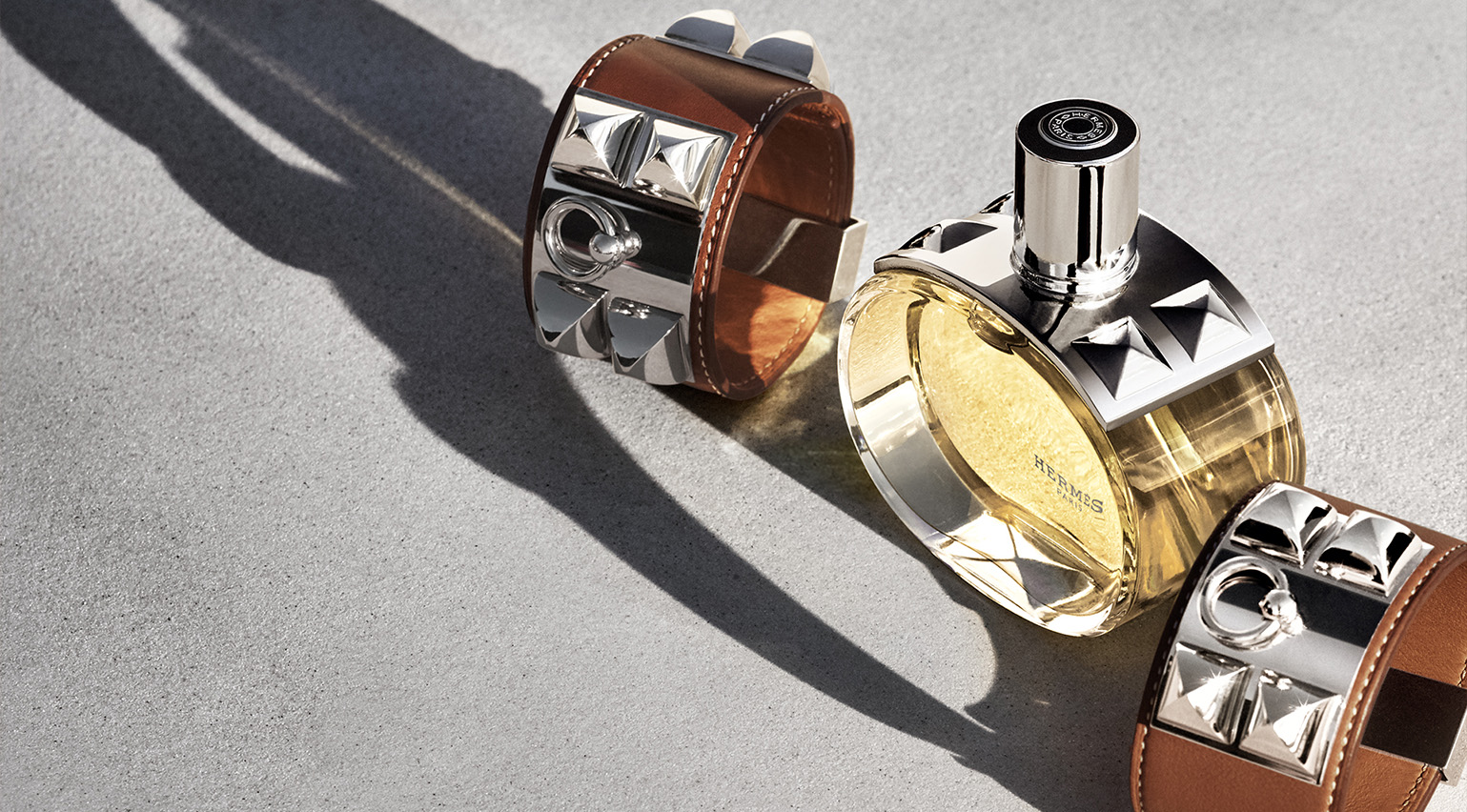 The story behind Hermès’ ‘Barénia’, a perfume that took nearly ten years to make
The story behind Hermès’ ‘Barénia’, a perfume that took nearly ten years to makeHermès’ ‘Barénia’ is the house’s first-ever chypre fragrance. Christine Nagel tells Wallpaper* why it was almost ten years in the making
-
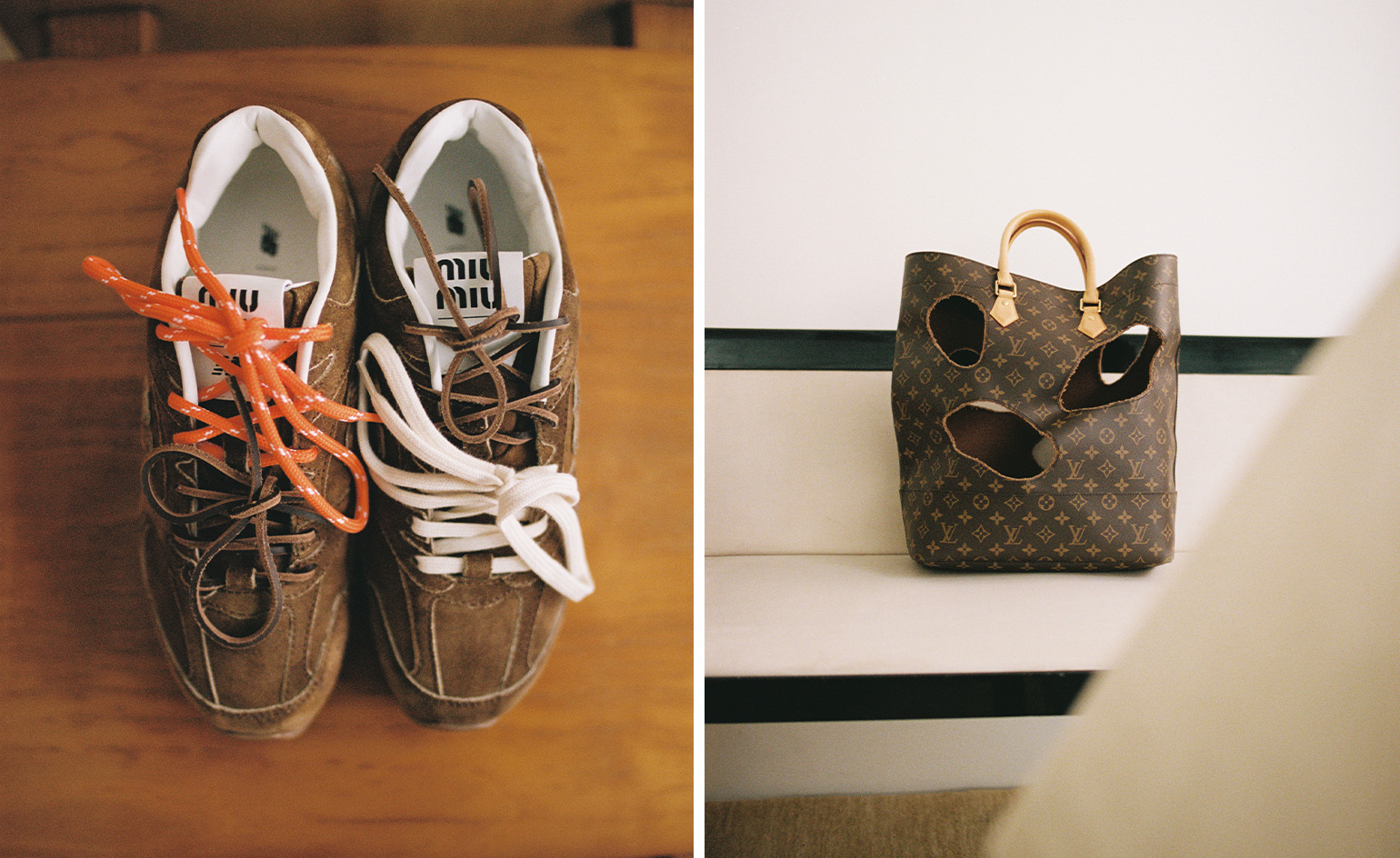 Sourcewhere is the app helping you find the rarest fashion grails
Sourcewhere is the app helping you find the rarest fashion grailsSourcewhere uses a network of experts and personal shoppers to source rare vintage and limited-edition fashion, from Phoebe Philo’s Céline to Margiela-era Hermès. Here, founder Erica Wright tells Wallpaper* why it’s reflecting a wider change in the way people shop luxury fashion
-
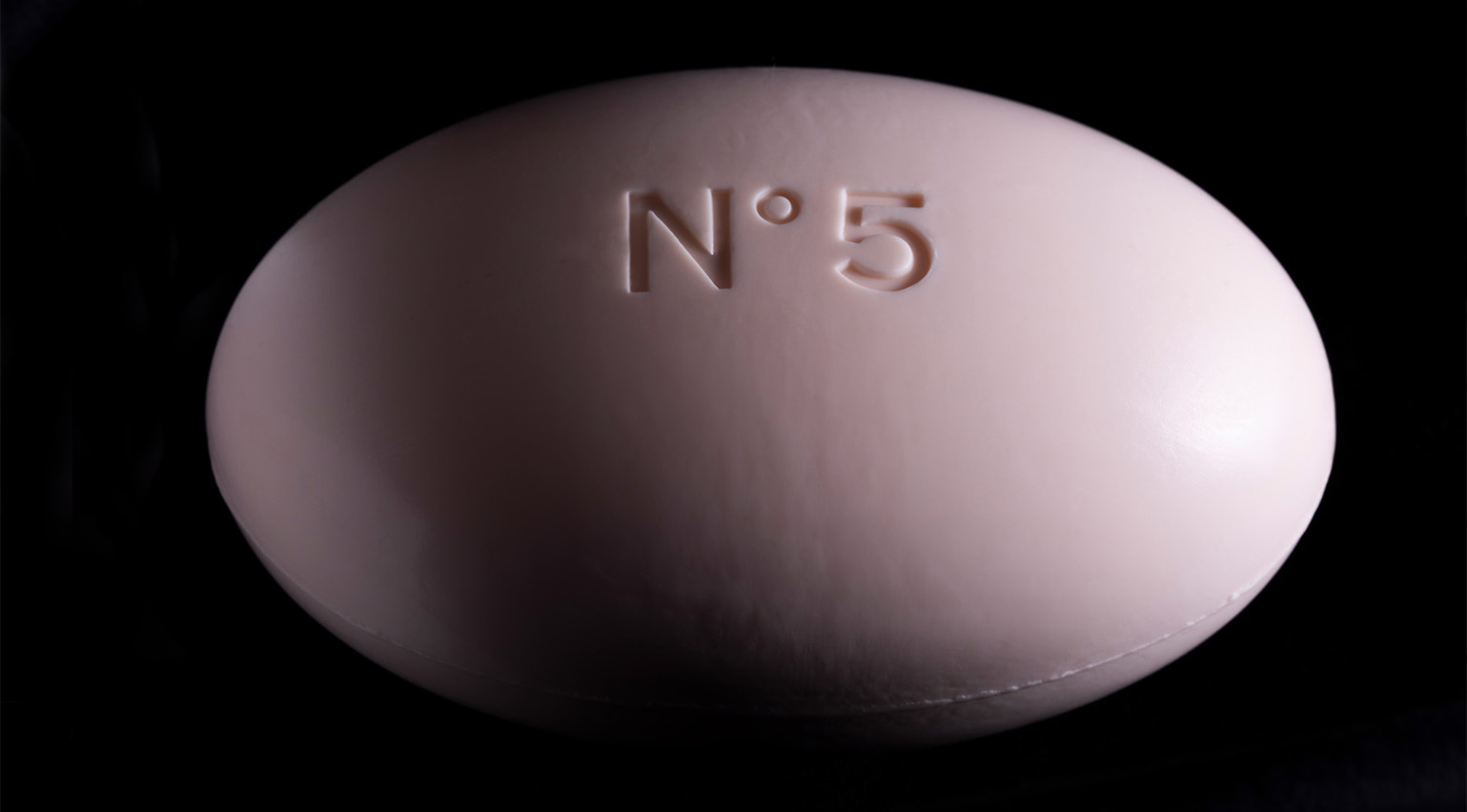 Why solid soap is the most pleasurable object to bathe with
Why solid soap is the most pleasurable object to bathe withSolid soap provides a tactile bathing experience like no other. Hannah Tindle explores why in the September 2024 Style Issue of Wallpaper*, with soaps by Chanel, Celine, Diptyque, and more, photographed by Sophie Gladstone
-
 The best sunscreens for your face, selected by the Wallpaper* beauty editors
The best sunscreens for your face, selected by the Wallpaper* beauty editorsThis list of the best sunscreens for your face has been compiled by Wallpaper* editors Mary Cleary and Hannah Tindle, who are highly selective about SPF
-
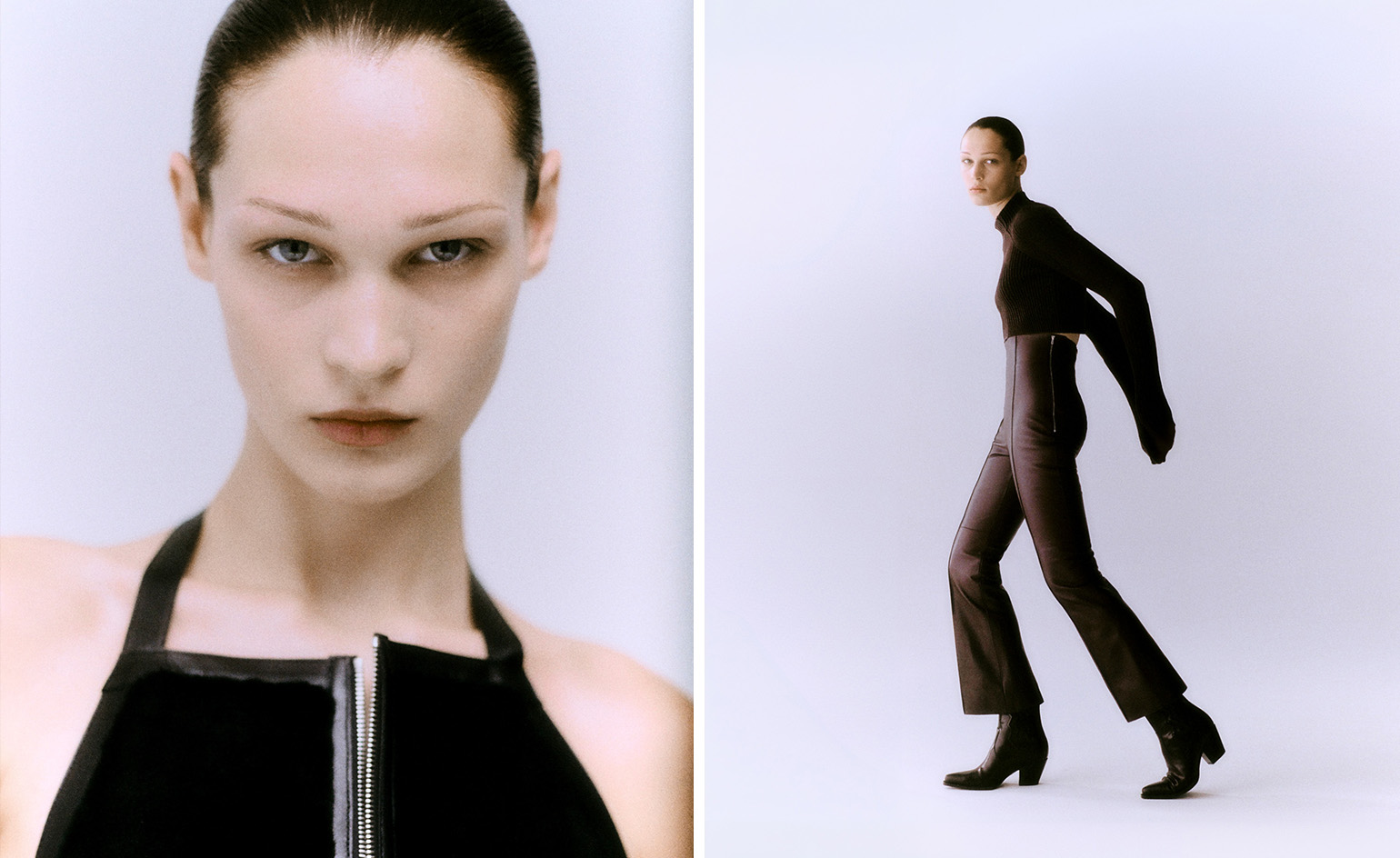 ’What is the life of a woman?’: Nadège Vanhée on a decade of womenswear at Hermès
’What is the life of a woman?’: Nadège Vanhée on a decade of womenswear at HermèsFor the past ten years, Nadège Vanhée, head of womenswear at Hermès, has steered the French maison on a quietly rebellious path, exploring notions of contemplation, liberation and sensuality. Speaking to fashion features editor Jack Moss, she unpacks her evolution